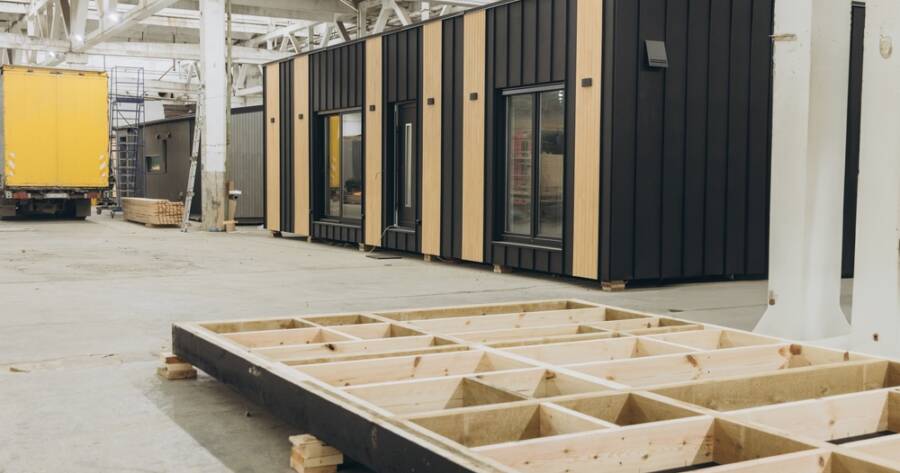Prefabricated homes are redefining the construction landscape with their sustainability, affordability, and innovative design. Constructed in controlled environments, prefab homes minimize environmental impact and construction waste while offering customization and rapid build times. With advancements in eco-friendly materials and smart technology, they present compelling options for modern, energy-efficient living.
Sustainable Prefabricated Homes: Stylish, Durable, and Affordable
In the evolving world of construction, prefabricated homes are gaining a momentous reputation for sustainability, cost-effectiveness, and adaptability. Known for their low environmental impact, these homes are crafted in controlled factory environments, significantly reducing construction waste.
The popularity of these homes extends far beyond sustainable living. The precise material usage in factory settings not only curtails excess but also ensures affordability, making prefabricated homes an attractive choice for budget-conscious homeowners.
Eco-Friendly Construction Methods
Prefabricated homes, or modular homes, integrate state-of-the-art technologies like SIP panels and Veka German quality windows and doors. These innovations provide superb thermal efficiency and sound insulation, exemplifying energy efficiency and reduced utility bills for homeowners.
By utilizing sustainable materials such as ground screw foundations and adhering to eco-friendly practices, these homes decrease their carbon footprints and offer significant environmental benefits. One prominent example is Dvele homes, which are entirely self-powered by solar energy, reducing grid dependency and delivering substantial financial savings to homeowners by requiring less energy per square foot.
Cost-Effectiveness and Speed of Construction
Modular homes are notably efficient in terms of time and cost. The majority of their construction occurs in factories free from weather-related delays, eliminating common interruptions faced in traditional on-site construction. This efficiency allows homeowners to move into their new homes in almost half the time usually required for site-built homes.
Not only is the construction quicker, but the savings in labor and material costs are significant. The standardized building processes within a controlled environment result in fewer delays and consistent quality, translating into affordability and reliability for homeowners.
Adaptability and Customization
One of the key features of modular homes is their adaptability. They can easily be expanded or modified according to homeowners’ changing needs, without the need for large-scale demolition. This flexibility is further enhanced by collaborative design efforts, allowing for the creation of custom, high-end homes tailored to individual lifestyles through collaborative design efforts in the industry. The use of computer-assisted design (CAD) technology ensures homeowners can customize their plans without compromising on quick construction and installation.
Durability and Safety
Built with both durability and safety in mind, prefabricated homes offer enhanced protection against environmental hazards. According to the Federal Emergency Management Agency, modular homes showcase superior structural integrity due to their rigid module-to-module construction.
This durability makes them an attractive option for residents in areas prone to natural disasters. Furthermore, the controlled indoor construction environment protects materials from harmful toxins like mold and rust, promoting healthier living conditions.
Innovations and Future Trends
Continuing advancements in the prefab industry highlight the bright future awaiting this sector. The integration of smart home technology, for example, is revolutionizing convenience and energy management in prefabricated homes.
There’s also a growing trend toward developing net-zero homes, which are designed to produce as much energy as they consume. These innovations are not only reducing the environmental impact of homes but are also significantly enhancing the quality of life for the residents, offering a futuristic living experience through the introduction of smart technology.
Why You Should Learn More About Prefabricated Homes Today
Prefabricated homes represent a remarkable blend of sustainability, affordability, and modern innovation in the housing sector. As they’ve become more popular, they continue to offer numerous benefits such as reduced construction time, cost savings, and environmentally friendly living. With their customizable and modular nature, they meet the diverse needs of homeowners while minimizing environmental impact.
For those looking to invest in a home that promises style, durability, and sustainability, exploring prefabricated homes appears not just promising but essential. The dynamic and evolving nature of this industry suggests that prefabricated homes are set to become a cornerstone in building sustainable futures.
Sources
Modular Homes and Sustainability Benefits
Eco-Friendly Prefab Home Designs

